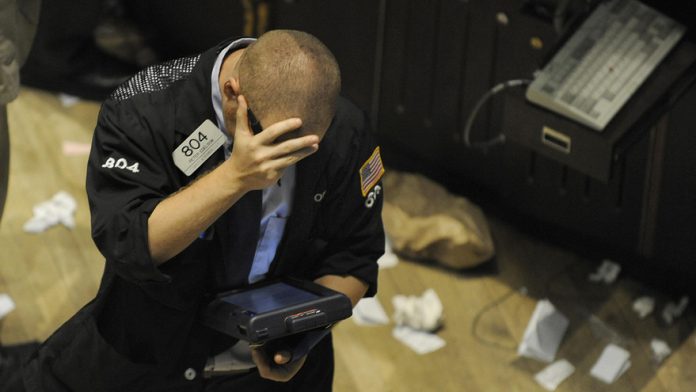Investors were treated to another volatile trading session this morning as rising yields threatened to plunge stocks lower. The Dow, S&P, and Nasdaq Composite all traded flat through noon after several hours of wild intraday swings.
The 10-year Treasury yield shot to 3.34%, drawing closer to the yearly high of 3.48% while striking fear into bulls. The S&P temporarily dipped roughly 1% in response before recovering.
With stocks looking so oversold in the short-term, many investors were looking for a bullish start to September.
“The weakness has been extreme enough to cause our most sensitive tactical indicators to suggest a pause in the selling, but our trusty weekly stochastic for the SPX continues to point to a market that lost upside momentum while in a clear intermediate-term downtrend of lower highs and lower lows,” said Canaccord Genuity technical analyst Tony Dwyer.
“Despite the possibility of an oversold bounce, we continue to suggest not taking any major market or sector bets until we see a real pivot from the Fed — and that is likely to take more time.”
Dwyer’s right. Technical signals are screaming for a rebound. But it’s failed to materialize as the market adhered instead to its seasonal trend.
“Bulls hoping for a rebound will be doing so during a shortened Labor Day week that historically has paralleled September and its track record of underperformance: Losses have been slightly less frequent over the past three decades, but volatility has been higher,” noted E*Trade’s Chris Larkin.
And that volatility should intensify as the week goes on. The European Central Bank (ECB) is set to hike rates this Thursday. The Fed will raise rates one day later. Fed Chairman Jerome Powell’s post-hike press conference should set the tone for the rest of the month as central banks continue their battle with runaway inflation.
But to Wall Street’s biggest bull, Fundstrat founder Tom Lee, falling gas prices should cause the Fed to back off its hawkish stance.
“I think the bar is pretty high for investors and markets and the Fed to be convinced inflation is breaking. I mean part of it is because inflation is so uncertain that the market wants to have comfort that it’s truly vanquished before they think the Fed can even consider being a little easier,” Lee said this morning.
“I think investors should be encouraged that [prices] hit some sort of wall. We think it’s actually going to fall pretty quick.”
That’s certainly an optimistic take and not all that surprising considering Lee has been continuously buying stocks throughout this year’s bear market.
The strategy hasn’t worked out for Fundstrat thus far, and as economic concerns continue to mount, it’s unlikely that he’ll have much success unless the Fed backs off its tightening way sooner than expected.
Given that Russia just cut off gas supplies to Europe indefinitely (as of Friday), though, conditions should not improve dramatically enough to warrant such a response from central banks. Several major European companies (mostly German ones) asked for bailouts over the weekend due to rising energy costs. European energy trading firms are desperate for liquidity, too. One trader suggested that $1.5 trillion worth of liquidity would be needed to deal with “dead capital” as a result of margin calls.
Many markets and supply chains either remain broken or are in the process of breaking further. That’s not what bulls want as the market heads toward a series of rate hikes from the ECB and Fed, especially with the S&P lingering so close to critical support at 3,900.








